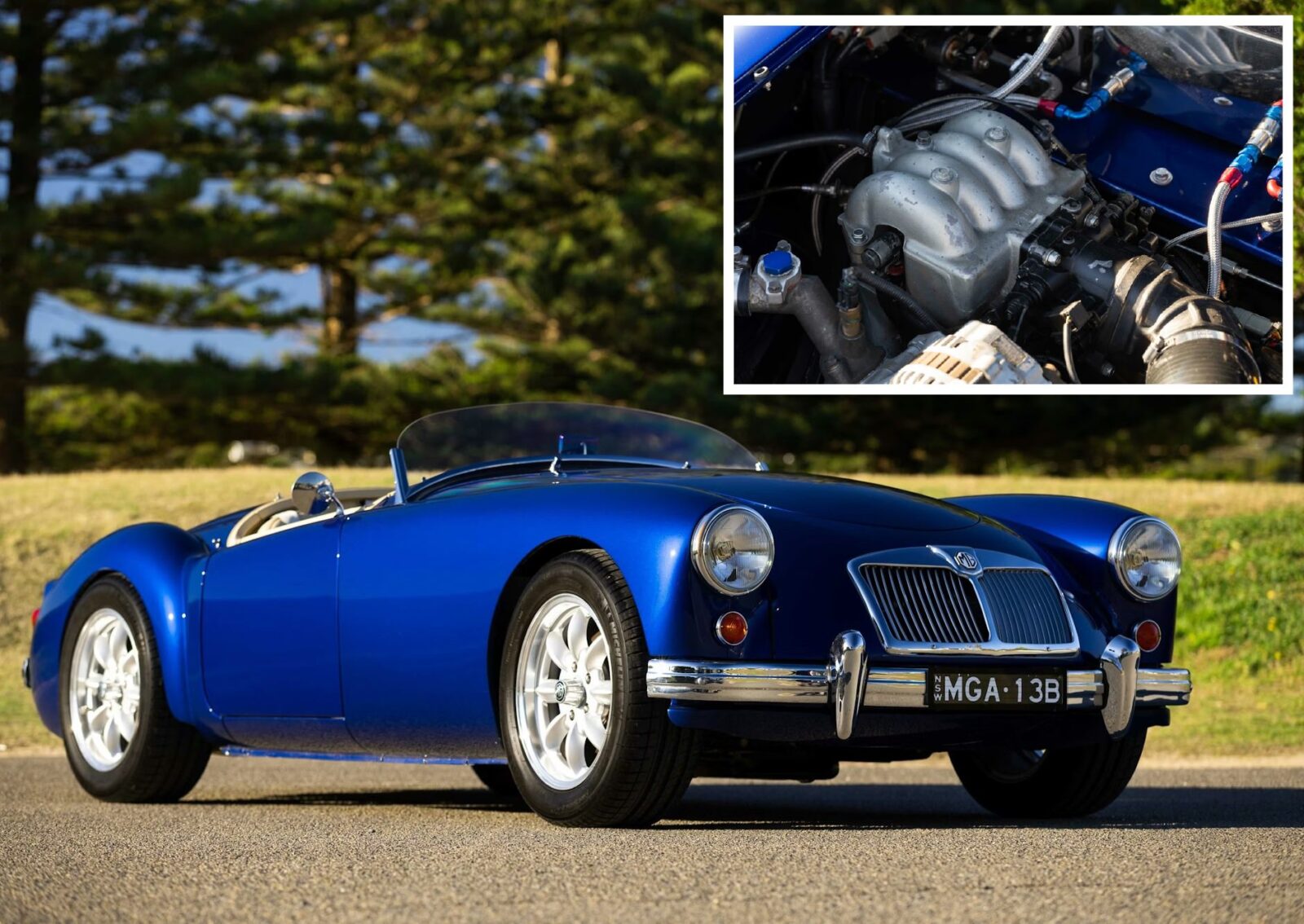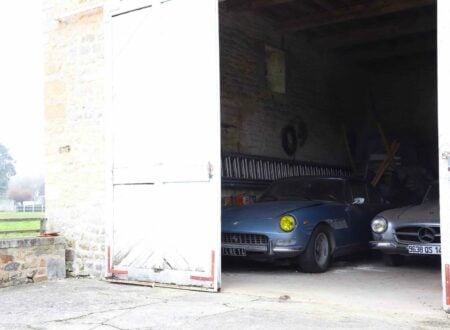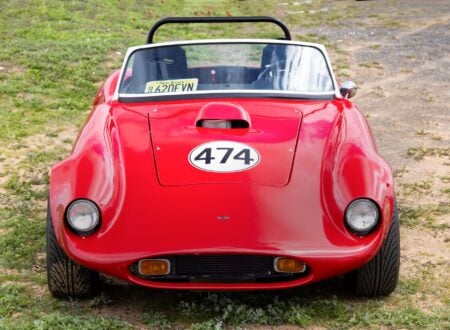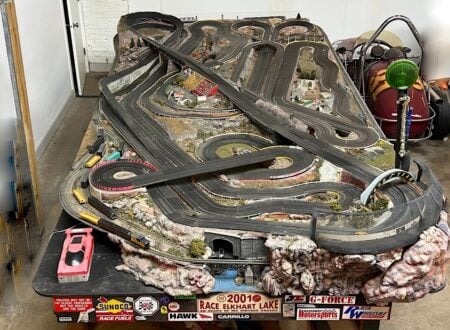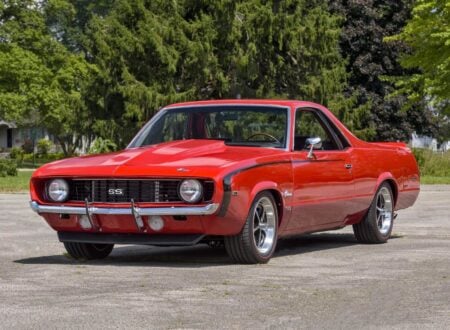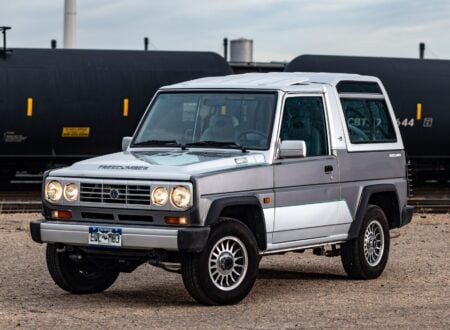This is a 1956 MGA Roadster that has been through a full rebuild which included the fitment of a 1.3 liter Mazda 13B rotary engine mated to a 5-speed manual Mazda gearbox.
This drivetrain offers far more power than the original four-cylinder unit and it does so with less weight, and arguably a much better sound to boot. The addition of that 5-speed box with an overdrive top gear also makes the car far better suited to being driven on modern highways.
Fast Facts: A Rotary-Powered MGA Roadster
- This car is a 1956 MGA Roadster rebuilt around a naturally aspirated Mazda 13B rotary and a Mazda 5-speed gearbox, giving it far more power (and less weight) than the stock four-cylinder. The overdrive top gear makes highway driving easier while still keeping the character of a lightweight British roadster.
- The MGA’s styling and engineering marked MG’s shift away from its pre-war roots toward lower and wider sports cars. It introduced a new chassis, fresh body design by Syd Enever, and updated running gear that appealed strongly to American buyers – the company’s most important export market. MG produced more than 101,000 examples of the car between 1955 and 1962.
- This vehicle underwent a full chassis-up rebuild by ProStreet Restorations in Australia, completed in 2015 and followed by compliance approval the same year. It has been driven only about 1,200 kms since. The restoration included Liberty Blue paint, tan Italian leather, Speedhut gauges, and discreetly integrated Bluetooth audio.
- Mechanical upgrades include a Ford Falcon EL rear axle with discs, AU front discs with dual Wilwood master cylinders, and a Coates steering column with Borgeson joints. It runs on 16-inch VTO Minilite-style wheels with Michelin Pilot Sport 3 tires. In standard tune the 13B produces 135 bhp to 160 bhp, a major increase over the original engine’s output.
History Speedrun: The MGA Roadster
The MGA arrived in 1955 as a clean break from MG’s pre-war sports cars which although fun, were well and truly outdated by the mid-1950s. The company had been relying on their T-Series cars for far too long, and sales were softening across the board.
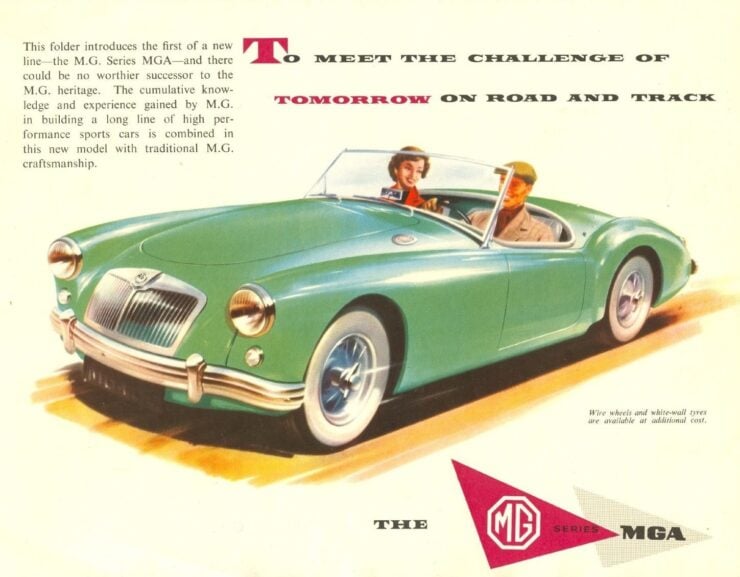

The post-war sports-car market was shifting rapidly toward lower, wider, more modern shapes, with cars like the Triumph TR2 and Austin-Healey 100 already setting new standards in both handling and styling. MG needed something that could reset the brand’s design language and restore its position in the American market – which had become by far its most important export channel.
The answer came from inside the company, there was an abandoned prototype designed around George Phillips’ streamlined TD-based Le Mans car. It was far lower, cleaner, and more purposeful than anything MG had put into production before.
Management initially hesitated, and BMC chairman Leonard Lord is reported to have rejected the new low-slung design when it was first shown to him, having only just agreed his Austin-Healey sports-car deal with Donald Healey. The project was effectively shelved until falling sales of the TF forced the issue – only then was the new car revived and approved as MG’s next sports car.
Engineering the MGA demanded that almost everything be designed from scratch. The old T-Series chassis was tall, narrow, and already outdated, it was never going to work. MG created a new, lower chassis with wider-spaced fame rails, a major step that allowed the sills to drop down and the body to adopt its now-famous low-slung shape.
Under the skin sat familiar MG powertrain – the 1.5 liter B-Series engine, twin SU carburetors, and a 4-speed manual gearbox. Output was modest, initially about 68 bhp and later uprated to roughly 72 bhp during 1500 production, but it suited a car known more for handling finesse than outright brawn.
The MGA rode on independent front suspension with coil springs and wishbones and a live rear axle with semi-elliptic springs – this helped keep costs down while delivering handling that was right on-par with what buyers expected at the time.
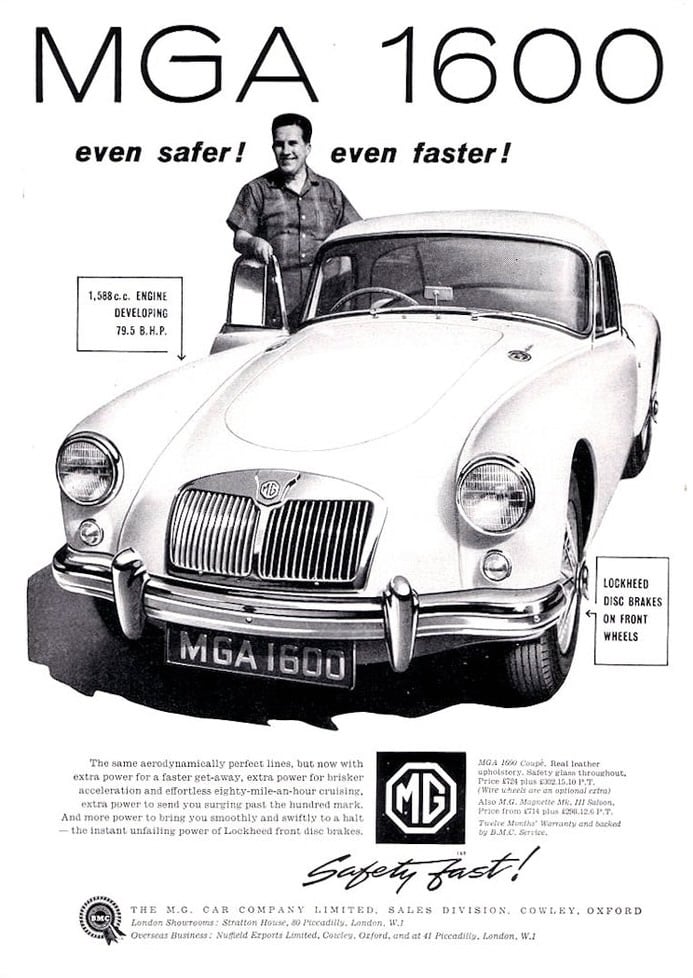

The car debuted at the 1955 Frankfurt Motor Show and immediately began winning itself new fans. MG finally had a shape that matched the era’s emerging sports-car style language – with its long nose, low shoulder line, sweeping fenders, and an interior placed as low as possible.
The design came from Syd Enever, whose Le Mans experiments earlier in the decade had demonstrated just how far MG could move from its earlier upright roots. Enever’s road-going interpretation preserved the aerodynamic lessons from Le Mans but delivered them in a package that was much easier to mass-produce and far easier to live with.
Early production cars went heavily to export markets, particularly the United States, where demand vastly exceeded MG’s expectations.
In 1959 MG introduced the MGA 1600, raising displacement to 1.6 liters (1588cc) and power to roughly 79 bhp. It wasn’t a major jump, but it gave the model a little more authority on roads that were seeing cars get faster and faster – seemingly year on year. The 1600 also brought front disc brakes while keeping the more traditional drums at the rear.
The 1600 Mk II followed in 1961, pushing displacement to 1622cc with revised cylinder heads and about 90 bhp. The Mk II also received updated trim, minor chassis tweaks, and a taller final drive ratio that improved cruising speed, making the car more competitive with contemporary Triumph and Healey offerings.
The most ambitious variant arrived earlier, in 1958 – the infamous MGA Twin-Cam. It used a high-compression, crossflow, chain-driven DOHC head mounted to a modified B-Series block. Power jumped to 108 bhp, and the chassis received four-wheel disc brakes to match, with special peg-drive wheels.


The Twin-Cam was fast, sharp, and technically advanced for its class, more inline with the twin cam sports cars coming out of Italy. That said, reliability and detonation issues as well as a reputation for fragility limited sales – MG improved the piston design and fixed reliability, but the damage to its reputation lingered.
The Twin-Cam left production in 1960 after roughly 2,100 cars had been built. Today it stands as the most technically interesting MGA and one of MG’s boldest engineering steps of the period, and they’re highly collectible – with the original engineering issues now well-and-truly solved by the aftermarket.
Production of the MGA as a whole ran from 1955 to 1962, during which MG built just over 101,000 cars. More than 80% went to export markets, establishing the MGA fundamentally a global car that brought in much-needed funds.
Competition was intense with Triumph’s TR2 and TR3, the Austin-Healey Sprite, 100/6, and 3000, and later the Sunbeam Alpine all fought for the same buyers. The MGA didn’t always win on power, but it offered an attractive package – with good styling, pricing, and handling, and it built a loyal following in the United States. MG’s racing efforts with the MGA also helped visibility.
Private and factory-backed entries ran at Le Mans, Sebring, and other endurance events, helped firm up the car’s reputation.
By 1962 the MGA had done its job. It carried MG out of its pre-war design mindset, brought modern engineering to the brand’s core sports car platform, and laid the groundwork for the MGB.
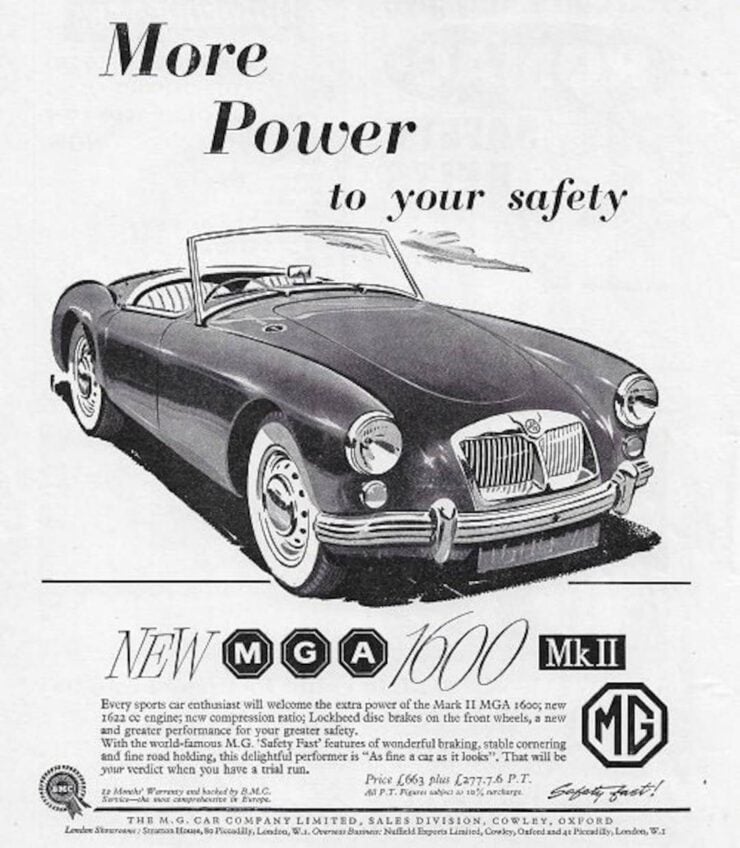

The MGB’s stiff monocoque construction, larger more powerful engine, and updated styling was better suited to the new market reality, but its proportions and general stance owed much to the MGA – and so did MG’s continued strength in key export markets.
The 13B Rotary-Powered MGA Shown Here
This MGA began life in 1956 as a relatively standard car, it’s now been thoroughly re-engineered into one-off built around a naturally-aspirated Mazda 13B rotary engine and a matching Mazda 5-speed manual transmission. The work was carried out by ProStreet Restorations in the Hunter Valley, in Australia – a region better known for its wine than its Wankels.
The full chassis, body, and interior restoration was completed in 2015 – it passed compliance testing in December that year and has remained road-registered in NSW, Australia ever since. The seller has owned it for 12 years and reports roughly 1,200 kms covered since the rebuild was completed, though this figure is not warranted.
The car was finished in Liberty Blue paintwork and re-trimmed light tan Italian leather. It has a body-colored lower dashboard, brushed aluminum accents throughout, Speedhut gauges, a push-button start, a Budnik steering wheel, and a low-level aeroscreen in the style of period competition screens.
A Sony stereo with Bluetooth is hidden in the glove compartment to keep the cabin clean and period-correct looking. It rides on 16 inch VTO Minilite-style wheels shod in Michelin Pilot Sport 3 tires, with body-colored brake calipers tucked away behind them.
As you might expect, the car was given significant mechanical changes to suit its new drivetrain. It has a Ford Falcon EL rear axle with disc brakes. The front uses Ford Falcon AU discs with dual Wilwood master cylinders and boosters. Steering is handled by a Coates column with Borgeson universal joints for improved feel.
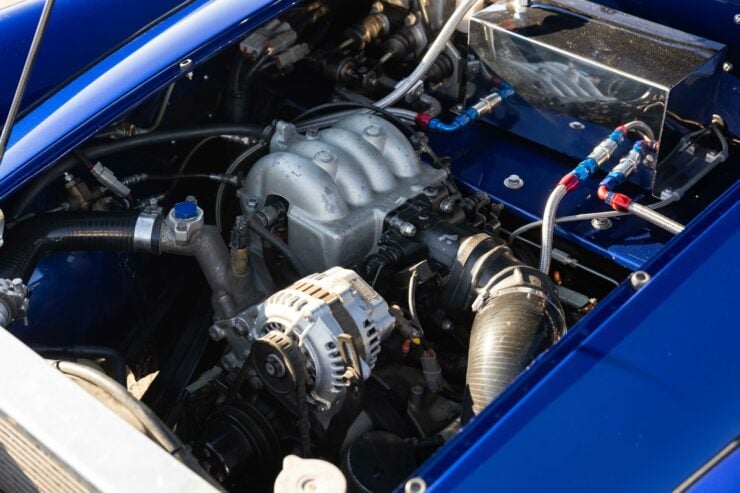

In standard tune the Mazda 13B is capable of 135 to 160 bhp, vastly more than the 72 bhp this car would have been producing when it left the factory in England back in the mid-1950s.
It’s now being offered for sale out of North Curl Curl, NSW and you can visit the listing here if you’d like to read more or register to bid.
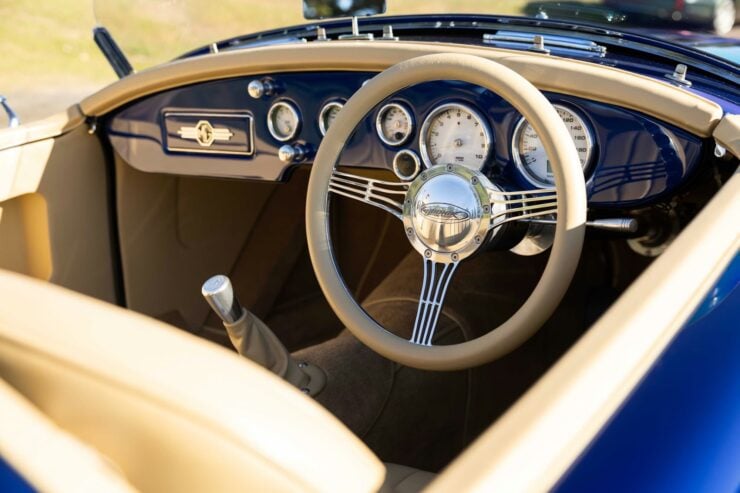
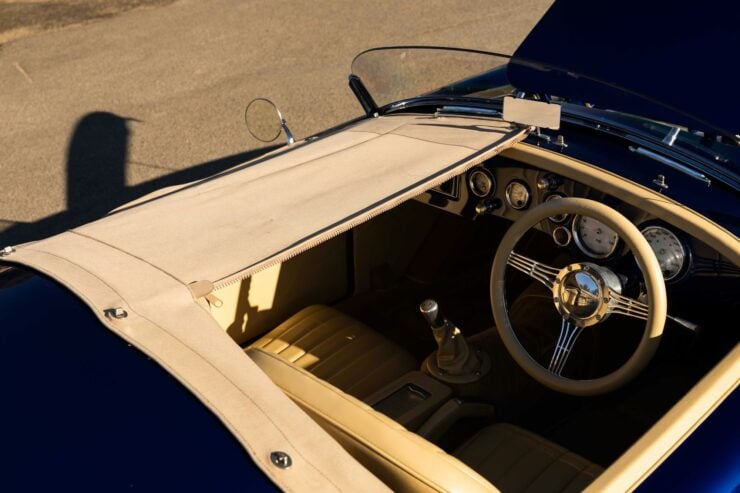



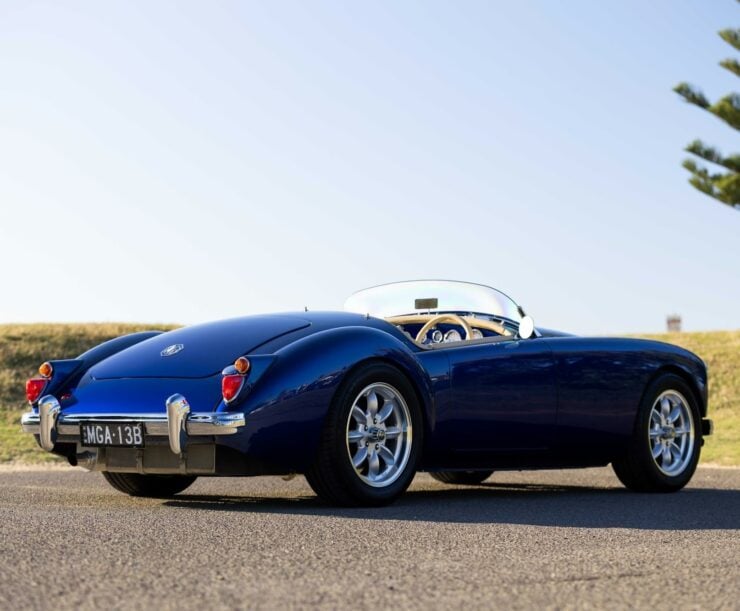
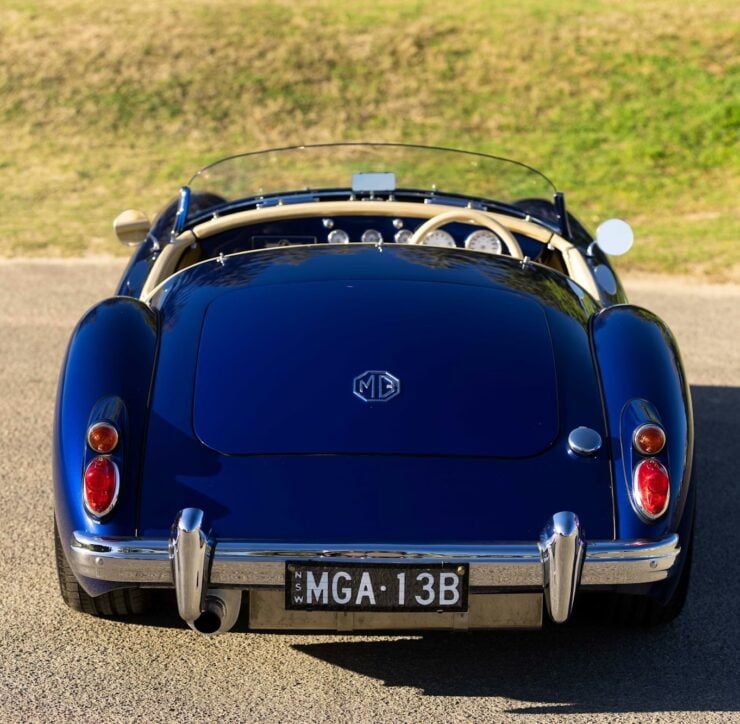
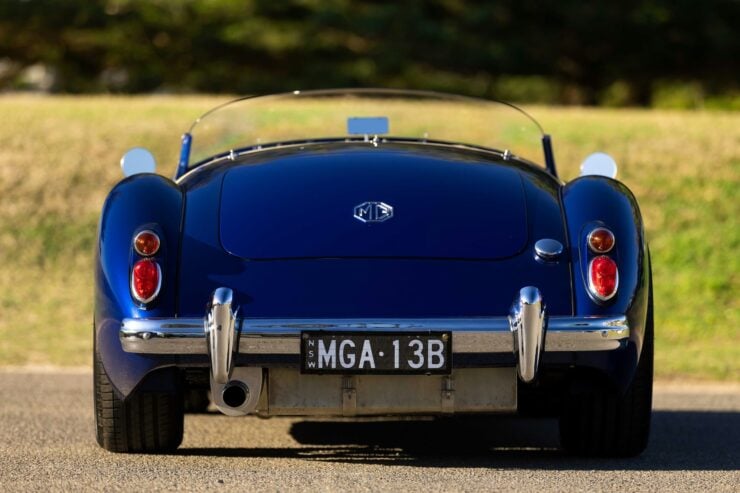
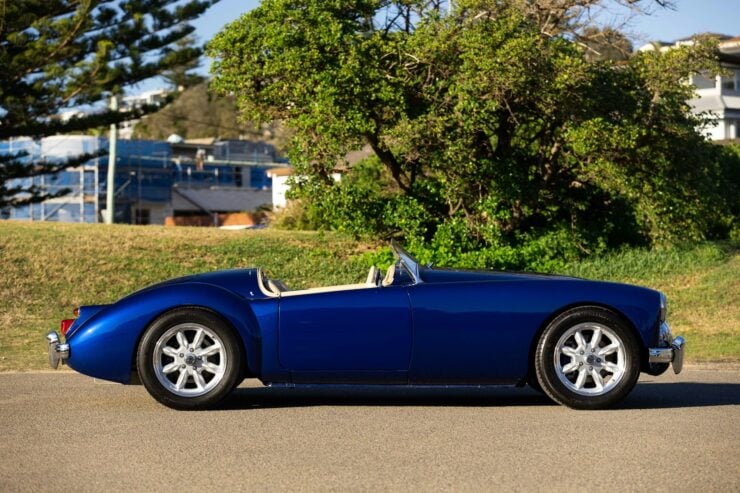
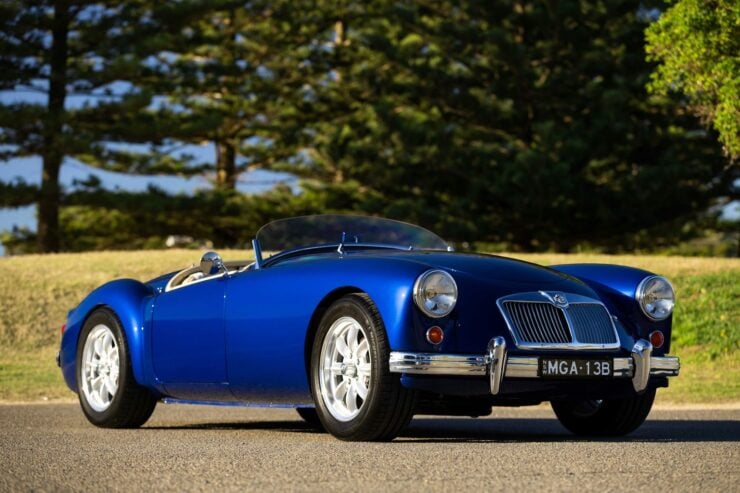
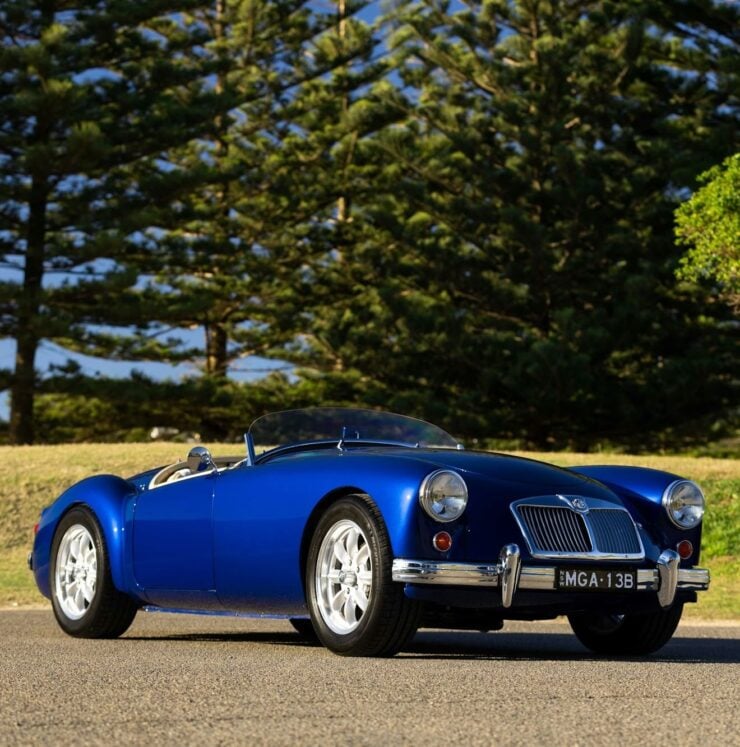
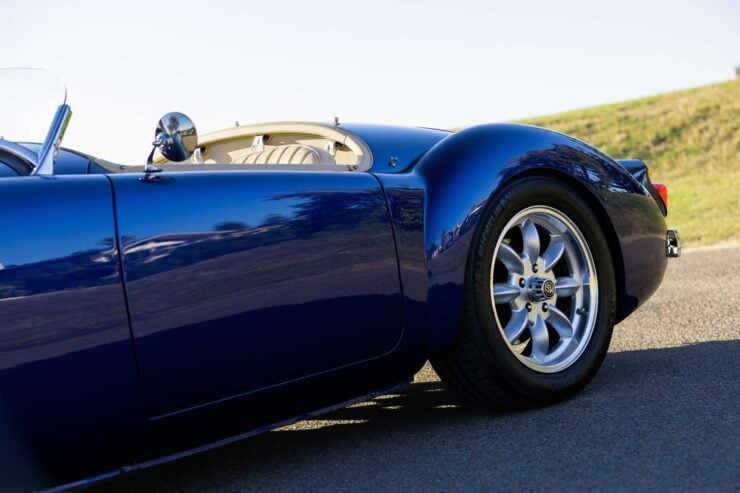

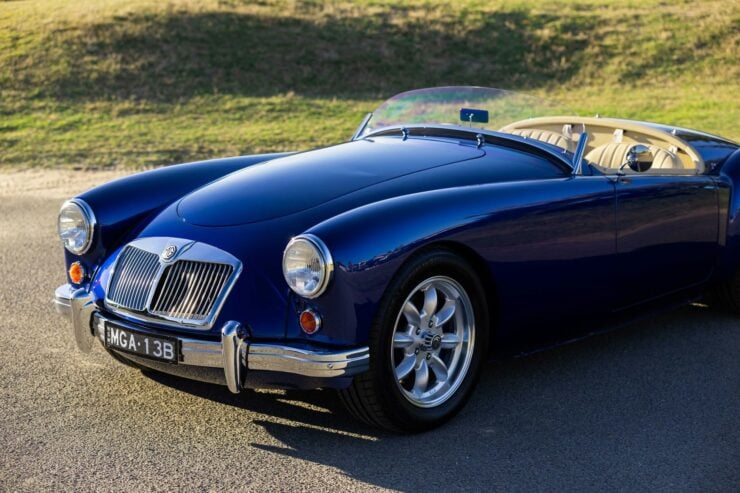
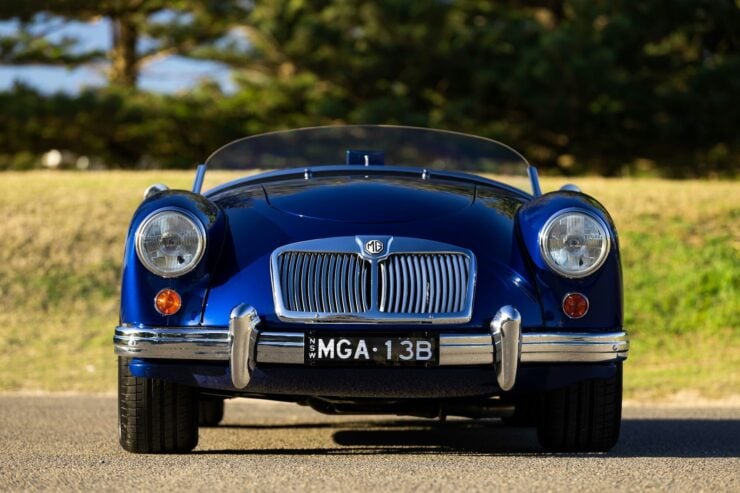
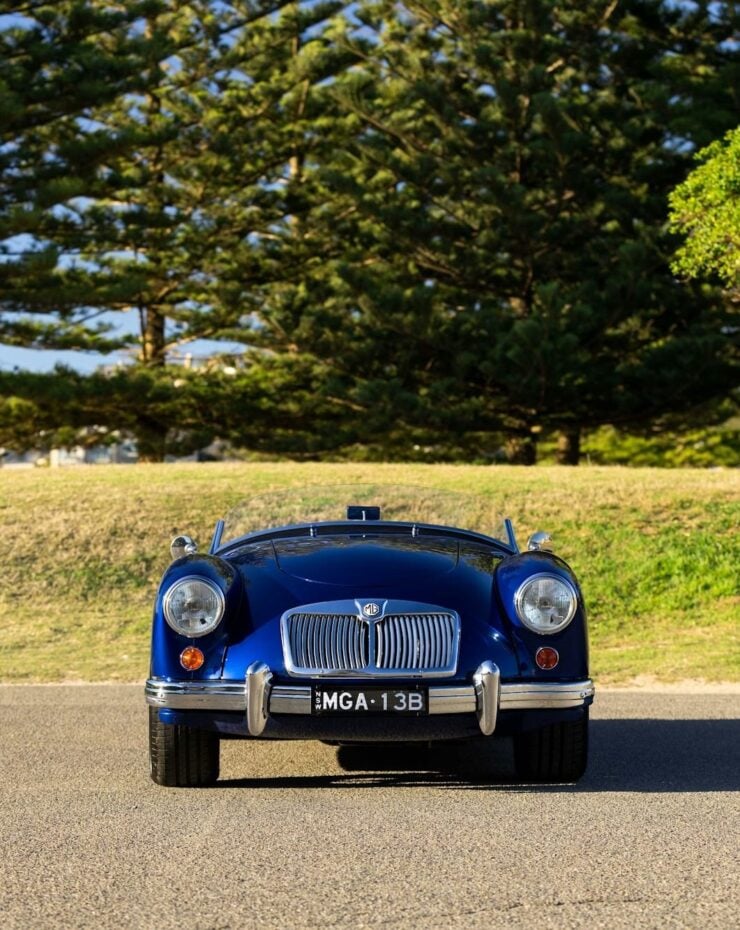


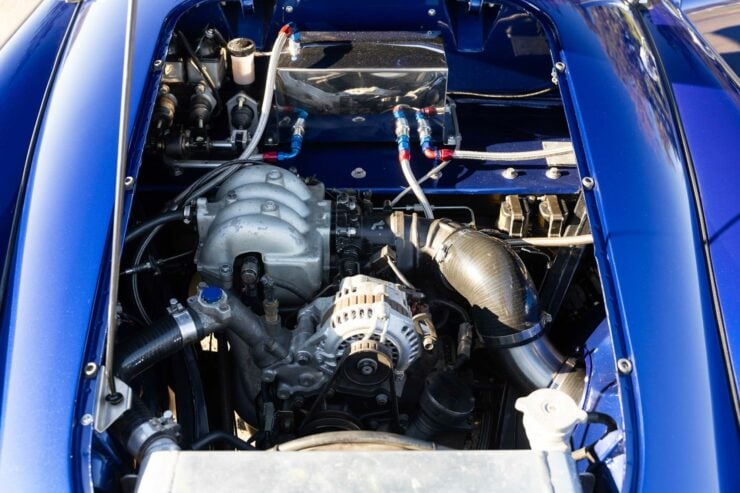
Images courtesy of Collecting Cars

